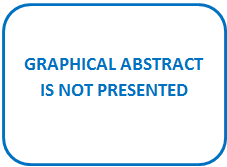Immunopathological response of the body in patients with chemosensitive and drug-resistant pulmonary tuberculosis
DOI:
https://doi.org/10.15587/2519-4798.2023.291226Keywords:
immune responsiveness, phagocytosis, T- and B-cell immunity, multi-drug resistant and chemosensitive tuberculosisAbstract
Immunological methods are important for diagnosing tuberculosis, evaluating the process activity, and forecasting the course of the disease and recovery.
Materials and methods. 47 patients with first diagnosed destructive sputum smear-positive pulmonary tuberculosis underwent a complex immunoassay. The patients were divided into two groups based on the sensitivity/resistance of mycobacterium tuberculosis to antimycobacterial agents. The first group consisted of 22 patients with first-diagnosed chemosensitive tuberculosis with preserved sensitivity to antimycobacterial agents. The second group consisted of 25 patients with multi-drug resistant tuberculosis pulmonary tuberculosis (MDR-TBP). The research was conducted during the 2018-2021 years.
Results Specific cell response disorders in patients with pulmonary tuberculosis are associated with the multi-structural T-cell protection misbalance caused by the quantitative changes of its components, the increase/decrease in the quantity of certain lymphocyte pools specifying the immune response vector.
In cases of tuberculosis, phagocytosis plays an important role. Phagocytosis might release cells from the tuberculosis pathogen. To achieve this, the activation of cells should reach a certain level. However, the initial protective nature of cell activation might become aggressive.
The T-cell immunity disorders were more evident in patients with MDR-TBP versus donors and patients with chemosensitive tuberculosis. The apparent decrease in СD3+СD56+, СD3+СD4+ pools and the increase in СD3+СD8+ were revealed in cases of MDR-TBP tuberculosis versus chemosensitive tuberculosis. The difference in СD3+СD4+, СD3+СD8+, СD3+СD4+/СD3+СD8+, CD3+СD8+HLA-DR+, СD16/56+8+ between the study and observational groups was statistically confirmed. The evident specific cell immunity disorders in patients with MDR-TBP aggravate the clinical course of the disease, causing destructive changes and acute and extensive processes.
Conclusions Changes in different components of the immune system might occur during pulmonary tuberculosis (in T- and B-cells, phagocytic cells), specific and enzymatic processes are activated, and autoimmunization is evident. The intensity of the changes varies at different stages of the disease. Most immune disorders caused by the specific inflammation process require immune correction.
References
- Lytvynenko, N. A., Feshchenko, Yu. I., Pohrebna, M. V., Senko, Yu. O., Protsik, L. M., Grankina, N. V. (2020). Pathomorphosis of chemoresistant tuberculosis. Tuberculosis, Lung Diseases, HIV Infection, 3 (42), 48–56. https://doi.org/10.30978/tb2020-3-48
- Melnyk, V. M., Novozhylova, I. O., Matusevych, V. H. (2013). Chemoresistant tuberculosis: the state of the problem in Ukraine. Ukrainskyi medychnyi chasopys, 5, 43–45. Available at: http://nbuv.gov.ua/UJRN/UMCh_2013_5_14
- Feshchenko, Y. I., Melnyk, V. M., Gumeniuk, M. I., Lynnyk, M. I. (2019). Tuberculosis epidemiological situation in Ukraine. Infusion & Chemotherapy, 4, 5–9. doi: https://doi.org/10.32902/2663-0338-2019-4-5-9
- Global Tuberculosis Report (2018). WHO. Geneva: World Health Organization. Available at: https://www.who.int/publications/i/item/9789241565646
- Liskina, I. V. (2016). Diagnostic possibilities of the immunohistochemistry at tuberculosis inflammatory process (UKR). Tuberculosis, Lung Diseases, HIV Infection, 3 (26), 93–100.
- Lapovets, N. Ye., Akimova, V. M., Lebed, H. B. et al. (2021). Laboratornaia imunolohiia. Lviv: Vydavets Marchenko T. V., 318.
- Petrenko, V. I., Varchenko, Yu. A. (2010). The role of Cytokines and their using in patients with tuberculosis. Tuberculosis, Lung Diseases, HIV Infection, 2 (2), 78–85.
- Platonova, I. L., Sakhelashvili, M. I., Tkach, O. A., Hrechukha, N. R., Komar, M. V. (2017). Osoblyvosti imunitetu u khvorykh na multyrezystentnyi tuberkuloz lehen z riznoiu efektyvnistiu khimioterapii. Ukrainskyi pulmonolohichnyi zhurnal, 2 (96), 116–117.
- Rekalova, O. M., Bilohortseva, O. I., Koval, N. H. (2017). Immunological methods of diagnosis of tuberculosis. Tuberculosis, Lung Diseases, HIV Infection, 1 (28), 75–83.
- Yunkerov, V. Y., Hryhorev, S. H. (2002). Matematyko-statystycheskaia obrabotka dannikh medytsynskykh yssledovanyi. Saint-Petersburg, 266.

Downloads
Published
How to Cite
Issue
Section
License
Copyright (c) 2023 Manana Sakhelashvili , Iryna Platonova, Lyubov Lapovets, Svitlana Zubchenko

This work is licensed under a Creative Commons Attribution 4.0 International License.
Our journal abides by the Creative Commons CC BY copyright rights and permissions for open access journals.
Authors, who are published in this journal, agree to the following conditions:
1. The authors reserve the right to authorship of the work and pass the first publication right of this work to the journal under the terms of a Creative Commons CC BY, which allows others to freely distribute the published research with the obligatory reference to the authors of the original work and the first publication of the work in this journal.
2. The authors have the right to conclude separate supplement agreements that relate to non-exclusive work distribution in the form in which it has been published by the journal (for example, to upload the work to the online storage of the journal or publish it as part of a monograph), provided that the reference to the first publication of the work in this journal is included.








